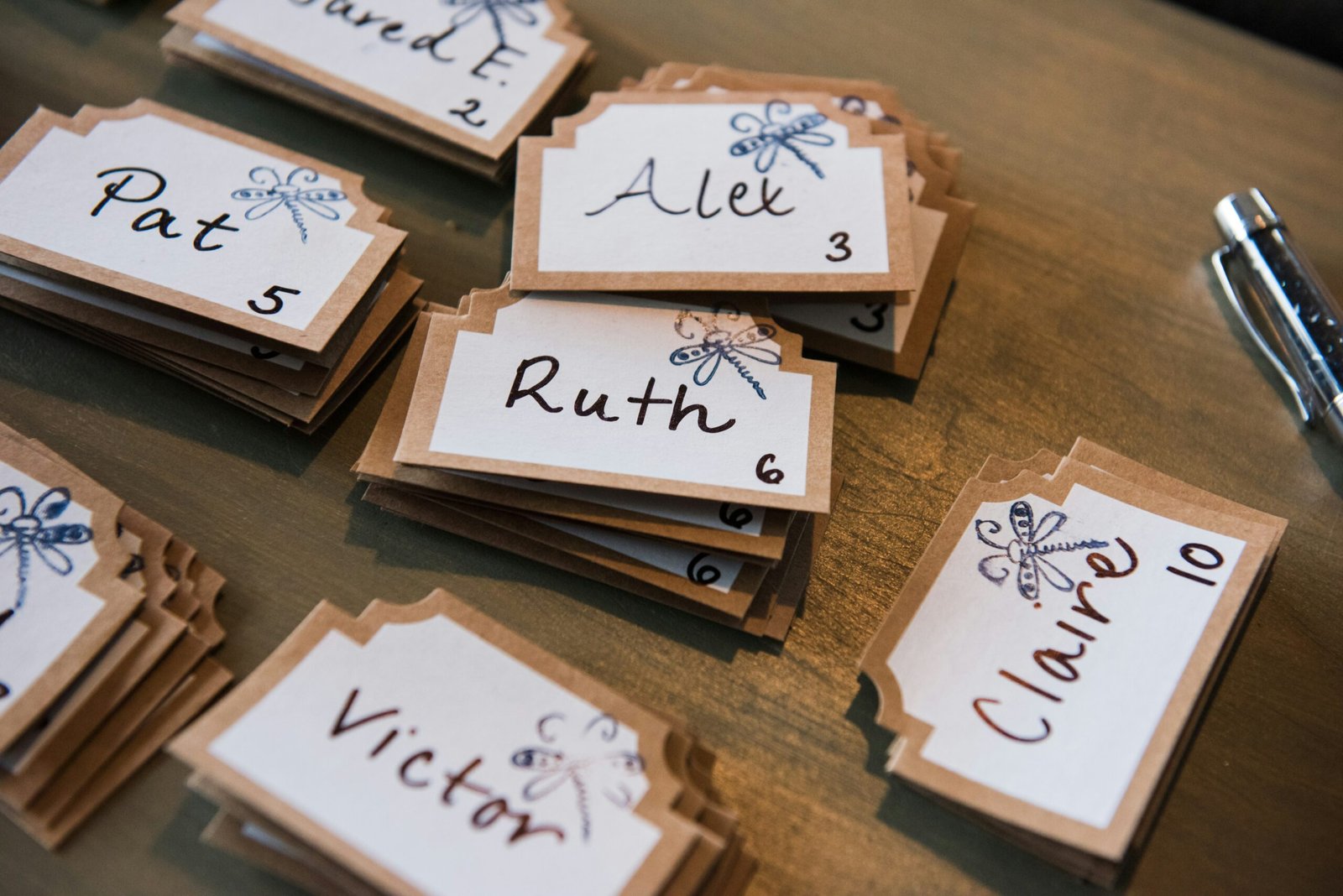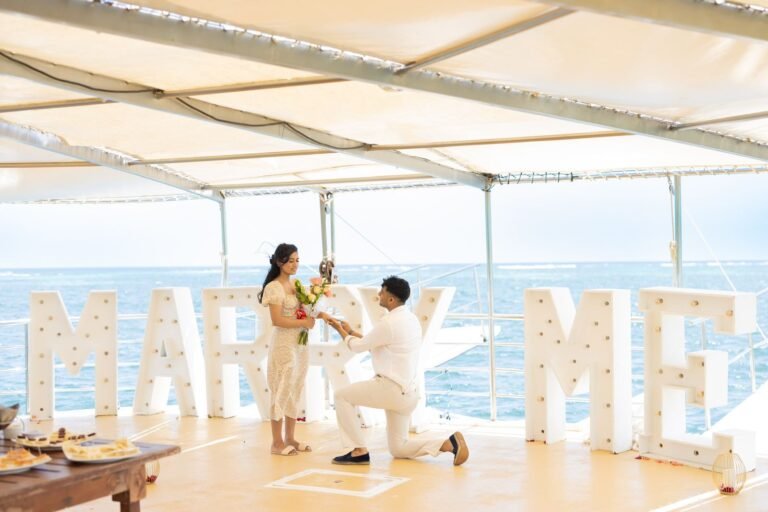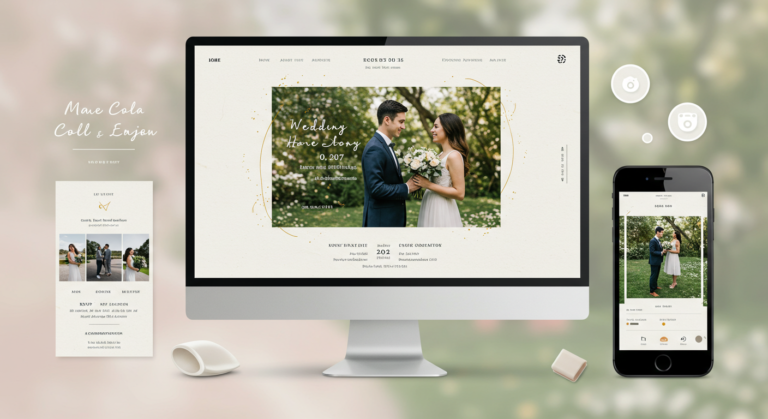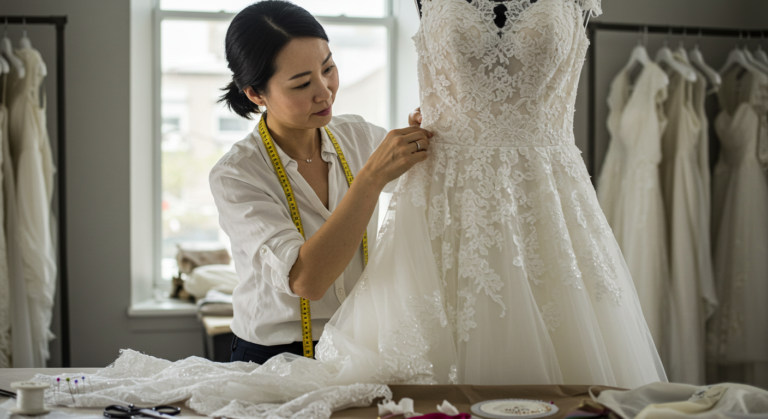Introduction to Seating Charts
Seating charts play a pivotal role in event planning, serving as an essential tool for organizers aiming to create a seamless experience for their guests. A well-structured seating arrangement enhances the overall ambiance of an event, guiding attendees to their designated places while fostering social interactions. By thoughtfully considering the placement of guests, organizers can cultivate an atmosphere that is conducive to conversation and connection, ultimately setting the tone for the occasion.
The importance of seating charts extends beyond mere organization; they facilitate a smoother flow of the event, allowing guests to navigate the venue with ease. An effectively designed seating layout can minimize confusion and ensure that guests are directed to appropriate zones, whether it is for a formal dinner, a wedding reception, or a corporate gathering. This aspect of planning is particularly crucial for large events, where the risk of overcrowding or disorientation may impede the overall experience.
Moreover, seating charts provide an opportunity for hosts to curate interactions among guests. By pairing individuals with common interests, backgrounds, or acquaintances, planners can foster engaging conversations and create a more enjoyable atmosphere. This mindful approach to seating not only enhances the guest experience but also reflects the care and thoughtfulness put into the event planning process.
In this blog post, we will explore five creative seating chart ideas that are sure to wow your guests. Each idea will offer insights into how to personalize and innovate your seating arrangements, turning a fundamental aspect of planning into an engaging element that people will remember long after the event concludes. From visual displays to interactive elements, there are numerous ways to inspire and delight through seating charts.
Idea 1: The Map of Memories
Creating a seating chart in the form of a “Map of Memories” can serve as a heartfelt centerpiece for your event, representing significant locations in the couple’s or host’s life. This unique design not only provides essential information regarding guest seating but also offers an emotional touch that resonates throughout the occasion. To execute this idea effectively, start by identifying key locations that hold sentimental value, such as where the couple first met, their favorite vacation spots, or venues of major milestones like weddings or anniversaries.
Once the significant locations are determined, consider utilizing a stylized map as the layout for your seating chart. A hand-drawn or digitally illustrated map can add a personal touch and visually represent the journeys shared. For optimal design, ensure that each critical location is marked clearly, accompanied by names or even photographs to evoke cherished memories. Utilizing colors and symbols associated with each site can further enhance this concept, creating a visual narrative that makes the map captivating and easy to understand.
In terms of materials, you have several options. Consider using parchment paper for a rustic vibe or seamless acrylic for a modern finish. If available, you might even explore sustainable materials to reflect a commitment to the environment. Ensure that the final touch of the map includes place cards that display guests’ names next to their assigned locations. This allows attendees to engage with the seating chart while also eliciting fond memories tied to each place. The emotional impact of a “Map of Memories” not only showcases thoughtful planning but also creates a memorable experience, inviting guests to reflect on shared stories and connections. By doing so, it enriches the overall atmosphere of the gathering, leaving a lasting impression on all present.
Idea 2: Vintage Window Panes
Utilizing vintage window panes as a medium for displaying a seating chart offers both charm and a touch of nostalgia to any event. These panes can be typically sourced from antique shops, flea markets, or even online marketplaces where vintage items are sold. When selecting window panes, consider the condition; they should be clean, intact, and free from excessive wear. A mix of different styles can enhance visual interest, allowing for a more eclectic display.
Preparation of the window panes is an essential step in ensuring they effectively serve as a seating chart. First, clean the panes thoroughly to remove any dust or grime that may obscure the names. If the window frames are painted or chipped, consider giving them a quick refurbishment to enhance overall aesthetics. For writing guest names, use a glass marker or vinyl lettering, which provides clear visibility against the glass background. Elegant calligraphy can add a sophisticated touch, making it an attractive centerpiece for your event.
When arranging the window panes for display, consider a layout that encourages guests to easily locate their names. Position the panes in groups or clusters, perhaps leaning them against a backdrop such as a rustic wooden table or a decorated easel, which can complement the vintage theme. Ensure that each pane is properly illuminated, as good lighting can enhance legibility and draw attention to the seating chart. To further elevate the design, incorporate floral arrangements or greenery around the base of the panes, harmonizing with the overall décor of the event.
This unique vintage window pane display not only serves a practical purpose but also adds a layer of rustic charm and character, enhancing the ambiance of any occasion while engaging your guests in a delightful experience.
Interactive Chalkboard
In recent years, the interactive chalkboard seating chart has emerged as a popular choice for events, offering not only a functional means for guests to locate their assigned seats but also a visually stunning backdrop for photographs. This approach combines creativity with practicality, effectively enhancing the overall atmosphere of the occasion.
To create an engaging chalkboard seating chart, consider its layout carefully. A large, well-positioned chalkboard should be easily visible upon entering the venue. Arrange the seating assignments in a clear, organized manner—perhaps in a grid format or arranged by table number. This clarity ensures that guests can navigate the chart quickly, reducing any potential confusion on the day of the event.
Styling the chalkboard is perhaps the most important aspect of its design. Utilizing high-quality chalk or chalk markers allows for intricate writing and decorative flourishes. For a sophisticated touch, opt for elegant fonts and playful graphics that resonate with the theme of the event. Additionally, incorporating color may enhance visual appeal; consider using chalkboard paint in various hues or adding brightly colored chalk to draw attention to specific sections of the chart. Integrating decorative elements such as framed borders, floral arrangements, or thematic props can elevate the overall aesthetic, making the seating chart an integral part of the event’s decor.
Furthermore, the interactive aspect of the chalkboard encourages guests to take pictures, creating memorable experiences associated with the seating process. To further enhance this engagement, consider adding a small spot for guests to sign their names or leave a message, turning the chalkboard into a collaborative piece of art. Overall, an interactive chalkboard seating chart not only serves its purpose but also adds a layer of creativity and charm to any gathering.
Eco-Friendly Floral Arrangement
When considering innovative seating chart ideas, an eco-friendly floral arrangement stands out for its aesthetic appeal and environmental benefits. Using live plants or flowers to guide guests to their seats not only enhances the décor of the venue but also creates a vibrant atmosphere that emphasizes nature. Incorporating elements such as potted succulents, hanging florals, or even terrariums can offer a unique twist on traditional seating charts while being sustainable.
Potted succulents, for example, make an excellent choice for an eco-friendly seating chart. These hardy plants require minimal maintenance, thrive in diverse environments, and can easily be labeled with guest names on small tags attached to the pots. By choosing succulents, guests are not only provided with their seating assignment, but they also receive a delightful take-home favor that can serve as a lasting memory of the event. Similarly, hanging floral arrangements can create a stunning visual effect, with each arrangement featuring a name card tucked into the blossoms. This approach adds elegance and intrigue, perfect for weddings or garden parties.
From a sustainability perspective, opting for live plants promotes a decrease in waste associated with conventional paper seating charts. It aligns with eco-conscious values by reducing environmental impact and encourages guests to embrace a greener lifestyle. Moreover, by encouraging guests to take their plants home, the experience extends beyond the event itself, allowing attendees to nurture the plants and enjoy them for years to come. Ultimately, an eco-friendly floral arrangement for a seating chart not only wows guests with its creativity and beauty but also reflects a commitment to sustainability in event planning, promoting both your values and innovative ideas.
Idea 5: Themed Place Cards
Incorporating themed place cards into your event can significantly elevate the experience for your guests. Themed place cards serve not only as a practical guide for seating arrangements but also as a reflection of the event’s overall aesthetic and personality. Customization based on the season, wedding colors, or guests’ personal interests adds a unique touch that can make your event memorable.
For instance, if you are hosting a spring wedding, consider using vibrant colors and floral designs that echo the essence of the season. Alternatively, for a winter celebration, choosing colder hues with cozy textures or materials can create a warm atmosphere. By selecting colors and designs that align with your event theme, you create a cohesive look that can impress attendees right from the moment they arrive.
Moreover, exploring creative alternatives to traditional paper cards can provide even more thematic depth. Instead of using standard card stock, opt for wooden tokens engraved with names and table numbers, which can tie beautifully into rustic or outdoor settings. For beach-themed events, seashells can be personalized with guest names and placed at each seat, adding a delightful touch that resonates with the coastal vibe.
Other interesting alternatives may include pebbles, small potted plants, or even vintage keychains that reflect elements of the event. Each of these options not only acts as a place card but also serves as a keepsake for guests to take home, thereby enhancing the overall experience. Displaying these themed place cards on a beautifully arranged seating chart will further draw attention to your thoughtful details, setting the tone for an extraordinary event. The blend of creativity and personalization in your themed place cards will surely wow your guests and make them feel special on your big day.
Tips for Executing Your Seating Chart Ideas
Successfully implementing a creative seating chart can significantly enhance the overall experience of your event, but it requires meticulous planning and attention to detail. To begin with, it is essential to organize your guest list well in advance. This includes gathering necessary information such as dietary restrictions, social dynamics, and preferences that could influence seating arrangements. By understanding your guests’ unique relationships and needs, you can develop an effective seating strategy that accommodates all parties involved.
Logistics play a critical role in the execution of your seating chart. Confirm the final guest count before laying out your seating plan. Depending on the format of your event—whether it is a banquet, cocktail party, or a informal gathering—the setup and arrangement will vary. Make sure that your seating chart reflects the available space optimally, considering both accessibility and comfort. Moreover, you should ensure that decorations and centerpieces do not obstruct sightlines or movement, as this could detract from the overall experience.
Clarity is key when it comes to displaying your seating chart. Utilize clear fonts and ensure that the design is easily readable from a distance. Signage should be positioned strategically to avoid confusion. Consider creating a few smaller charts based on specific areas to minimize crowding around a single display. Providing name cards at each seat can also clarify guests’ designated locations, making the transition from arrival to seated positions seamless.
It is also prudent to prepare for potential challenges. For instance, having a backup plan in case of last-minute changes, such as cancellations or additions to the guest list, is crucial. Keep extra seats or adaptable arrangements at the ready to accommodate unforeseen circumstances. By anticipating these challenges and having solutions in place, you can ensure a smooth execution of your seating chart ideas.
Incorporating Technology in Seating Charts
The integration of technology into seating charts has been a game changer for modern event planning, offering innovative solutions that enhance guest experience while simplifying the organization process. Digital displays are one popular approach that provides a dynamic way to present seating arrangements. Large screens can be strategically placed at the venue entrance, showcasing guest names along with their assigned tables. This not only elevates the visual appeal but also allows for real-time updates, accommodating any last-minute changes without the need for paper reprints.
Additionally, mobile applications designed for event management can facilitate guest check-ins and seating assignments. These apps streamline the process, allowing guests to search for their names and obtain seating information with just a few taps on their smartphones. This system promotes ease of access, particularly for larger events where traditional paper charts may become cumbersome or impractical.
Moreover, QR codes are an increasingly popular tool in contemporary event planning. By incorporating QR codes into invitations, guests can scan the code to be directed to an online seating chart. This not only provides immediate access to seating information but also allows for interactive features, such as filtering options to find members of their group or other specific details about the event layout. The convenience of this approach is particularly beneficial in today’s digital age, where guests often expect quick, easy access to information.
However, there are notable considerations to be mindful of when implementing these technological solutions. While digital options provide enhanced flexibility and interactivity, reliance on technology can pose challenges. Technical issues may inadvertently disrupt access to information, leading to potential frustration among guests. Additionally, it is essential to ensure that all guests, particularly those who may not be as tech-savvy, have an alternative method to access seating arrangements. Balancing traditional methods with modern technology can help create an inclusive and seamless experience for everyone involved.
Conclusion and Final Thoughts
Incorporating creative seating chart ideas can significantly impact the overall experience of any event, whether it be a wedding, corporate gathering, or other special occasions. Traditional approaches often leave little room for personalization, but embracing innovative concepts allows hosts to inject their unique style and preferences into the event. These inventive seating chart ideas not only facilitate organization but also serve as an eye-catching focal point that can spark conversations among guests.
As we have discussed, innovative seating arrangements can elevate the atmosphere, enhancing the enjoyment and engagement of attendees. For instance, using themed displays or interactive elements, such as escort cards affixed to balloons or vintage mirrors, can create a memorable first impression. It’s essential to consider how each of these creative options reflects the host’s personality and the overall theme of the event.
Furthermore, stepping outside the norm with creative seating charts can also establish a more inclusive and welcoming environment for guests. In a world where personal connections are paramount, these unique ideas encourage interaction and help break the ice among individuals who may not know one another well. Therefore, having a well-thought-out seating arrangement that resonates with one’s personal style can leave a lasting impression on guests.
Ultimately, when planning your next event, take the time to reflect on your preferences and the atmosphere you wish to create. By experimenting with diverse seating chart ideas, you can craft an engaging and unforgettable experience for all in attendance. Your choices can inspire others to think innovatively about their own event planning, fostering an environment that values creativity and individuality.









